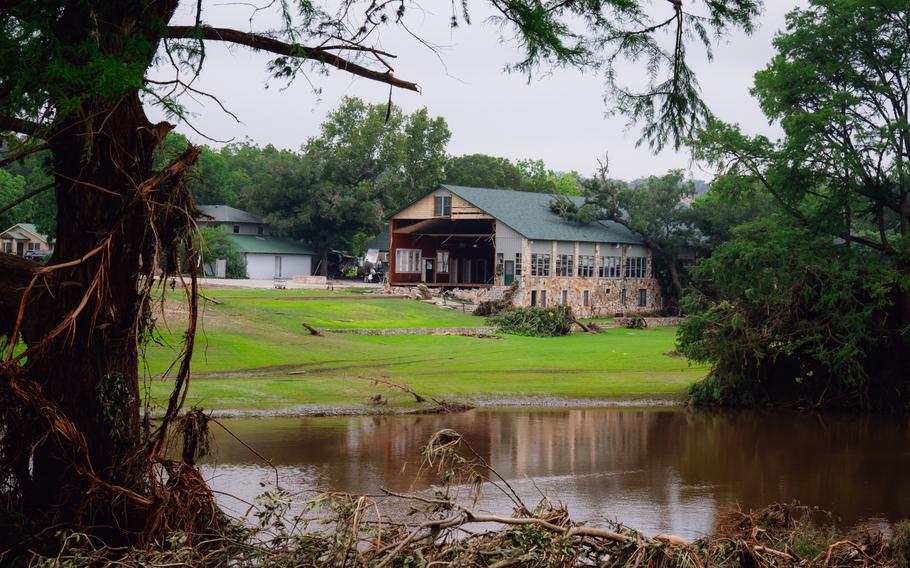
Flood damage around Camp Mystic in Hunt, Texas, on Saturday. (Desiree Rios/The Washington Post)
Coast Guard rescue swimmer Scott Ruskan touched down by helicopter Friday afternoon at Camp Mystic after treacherous weather in Texas improved just enough to reach the site of devastating and deadly flooding. Cold, wet, scared children greeted him, many shivering in mud with no shoes.
“That’s how quickly this floodwater rose. They didn’t have time to grab shoes,” Ruskan said in a phone interview. “You’re just carrying kids that don’t have shoes on, they’re covered in mud, and you’re trying to get them out of there.”
Ruskan, 26, was part of an initial rescue effort after the Guadalupe River surged by more than 20 feet in less than two hours early Friday, killing at least 27 campers and counselors at Camp Mystic, an all-girls Christian retreat in rural Hunt, Texas. Across the region, at least 90 people were killed, authorities said Monday, with others still missing.
While local authorities dispatched rescue workers to the region, the Coast Guard and Texas National Guard quickly joined the mission, sending military support to flood-afflicted areas. Texan officials said Sunday night that the National Guard’s Black Hawk helicopters had rescued 361 people, with 159 more people recovered by ground. Coast Guard officials said on social media that it dispatched its distinctive orange and white MH-65 Dolphin helicopters, evacuating 15 people from Camp Mystic and assisting in the rescue of 230 more.
Ruskan, of Oxford, New Jersey, was at the center of that effort on Friday afternoon, and credited by Homeland Security Secretary Kristi L. Noem with organizing the rescue of 165 people. He and his team — aircraft commander Lt. Ian Hopper, co-pilot Lt. Blair Ogujiofor and flight mechanic Seth Reeves — were summoned from the Coast Guard air station in Corpus Christi, Texas, more than 200 miles southeast of Camp Mystic.
The team was alerted of flooding near San Antonio about 6:30 a.m., in the air by 7 a.m., and initially encountered weather so bad as they approached flooded areas that they “lost visual” and needed temporarily to turn back, Ruskan said.
While waiting in San Antonio for the weather to improve enough to fly, the gravity of the situation emerged, Ruskan said. They arrived at Camp Mystic about 2:30 p.m., with the rotor wash from their helicopter knocking down archery targets.
The rescue swimmer helped a few people aboard the aircraft, and stayed behind to assist other campers who were still stranded, he said. He spent more than three hours on the ground, he said, organizing others to depart on Black Hawk helicopters.
“Some of it was simply talking to them and consoling them and trying to make them feel comfortable,” Ruskan said. He was struck, he said, by the stories of teenage camp counselors, some of whom shared that they had been forced to toss younger girl campers through doors and windows to escape the raging waters.
“It was some really heroic stuff by those camp counselors,” Ruskan said. “I really hope they get the recognition they deserve.”
Ruskan said the mission was his first case as a rescue swimmer, after he completed training last year. He joined the service after working as an accountant at the financial services firm KPMG, and said those who trained him warned him repeatedly that his first rescues would not be like anything they trained him on, “and that’s kind of the point.”
“The expectation is that everyone is looking for someone to not be a hero, but kind of help them out and get them situated,” Ruskan said. “That’s what they needed me to be, and that’s what kind of was in this case.”